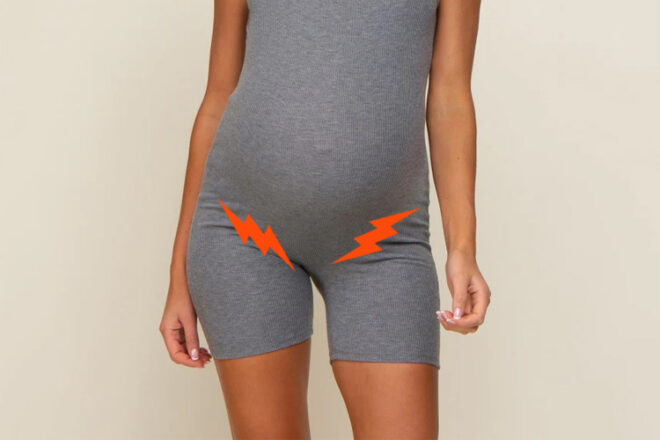
You’re fast approaching the 40-week club or perhaps you’re already there, and your doctor decides bub is a bit too comfortable and it’s time to hand out the eviction notice.
One of the ways they might do this is a procedure called a membrane sweep, or more commonly referred to as a stretch and sweep.
We roll up our sleeves and dig deep into what’s involved in a stretch and sweep so you know what to expect going into one.
Why have a stretch and sweep?

In an effort to reduce the risk of baby being born over your due date, and to reduce the need for a medically induced induction, you may be offered a stretch and sweep.
It’s a simple, relatively gentle way of encouraging your body to go into labour spontaneously.
Think of it as the most natural form of being induced.
What exactly does a membrane stretch and sweep involve?

The best way to describe it is to break it up into two parts:
Stretch: Your doctor is going to stretch your cervix by inserting a gloved finger inside your vagina. It’s like a massage for the neck of your womb and the aim is to encourage your cervix to open.
Sweep: Once your cervix is open enough for them to fit their index finger inside, your doctor will then sweep your membranes. This sweeping motion separates the membrane of your amniotic sac from your cervix. The idea behind this is to get your body to produce chemicals known as prostaglandins. These are the hormones that stimulate labour.
If all goes to plan, a stretch and sweep should have you in labour within 48 hours.
When would I be offered a stretch and sweep?

Membrane sweeps are usually offered to women between 38 and 41 weeks pregnant.
It will only be recommended if you’re otherwise physically “ready” for a vaginal delivery. You won’t be offered a stretch and sweep if the baby isn’t in the right position yet (head down) or if you have a low lying placenta.
If your cervix isn’t soft and beginning to dilate, you’re also not likely to be able to proceed with a stretch and sweep. And trust us, if this is the case, you wouldn’t want to either – it would hurt like heck!
Stretch and sweeps usually aren’t recommended if you’ve had a c-section before or are expecting multiple births (twins or more).
Will it hurt?

If your heart is beating a little faster than usual right now, it’s normal. A membrane sweep is probably not going to be the most pleasant experience of your life. But you should only experience intense discomfort during the procedure.
Afterwards, however, any intense discomfort and or pain, cramping and light bleeding is usually a good sign – you might have started experiencing contractions!
If the pain becomes severe, you have bright red bleeding, or your waters break, contact your health care team straightaway.
Does it always work?

Generally speaking, most women will give birth within a week of a membrane sweep.
The procedure itself has a 24% success rate for labour commencing within 48 hours. We know that doesn’t sound all that great but, as a relatively safe, natural method of inducing labour, it’s probably worth considering.
Stretch and sweeps are also able to be performed more than once.
Probably not the most appealing thing to line up for a second time over. But then if you asked a woman who’d been medically induced they’d probably tell you to go for the sweep again!
Are there any risks?
The main risk with a stretch and sweep is that it will cause your waters to break. This can cause irregular contractions but that may not always mean you’re in labour.
If your water breaks but you do not go into labour, your doctor will likely recommend proceeding with a medically induced labour. This is due to the increased risk of infection that comes with having your waters broken for an extended period of time.
To be fair though, the whole goal was to get you into labour – so one way or another it’s going to happen!
Where to get help
If you’ve reached 42 weeks and still nothing, it’s definitely time to head back to your doctor. There are risks with extending your pregnancy any further than this.
At the end of the day, a membrane stretch and sweep isn’t for everyone. If you’re considering if this might be a good choice for you, make sure you discuss it with your health care team.
We hope it goes without saying too but – please don’t try and do this yourself!!! This is a medical procedure that must only ever be performed by a medical professional.
If you’ve passed the 38-week mark, congratulations, you are going to be a mum very, very soon. This is an exciting time and, however you go into labour, your beautiful baby will be in your arms before you know it. Enjoy!



